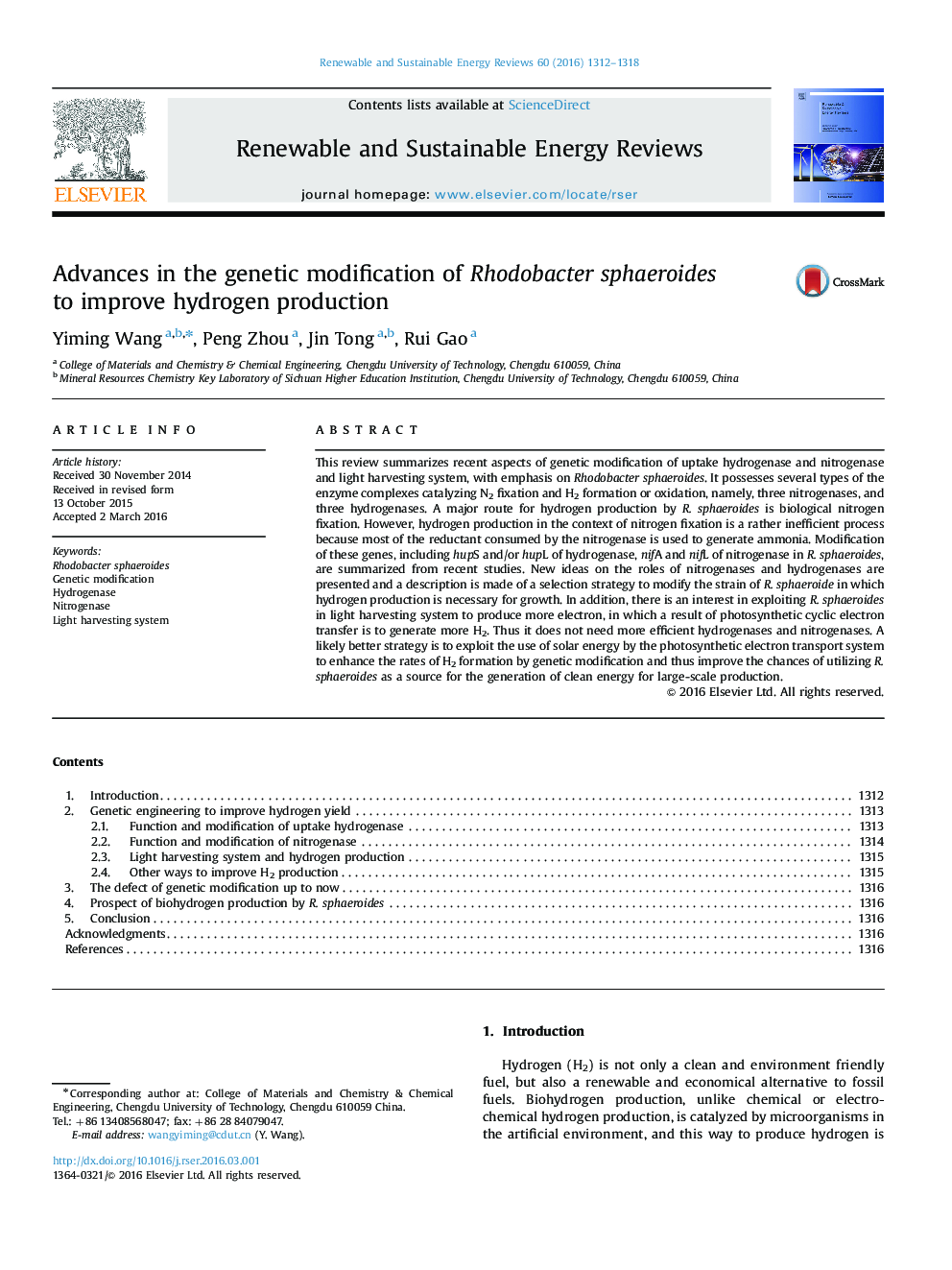| Article ID | Journal | Published Year | Pages | File Type |
|---|---|---|---|---|
| 8114445 | Renewable and Sustainable Energy Reviews | 2016 | 7 Pages |
Abstract
This review summarizes recent aspects of genetic modification of uptake hydrogenase and nitrogenase and light harvesting system, with emphasis on Rhodobacter sphaeroides. It possesses several types of the enzyme complexes catalyzing N2 fixation and H2 formation or oxidation, namely, three nitrogenases, and three hydrogenases. A major route for hydrogen production by R. sphaeroides is biological nitrogen fixation. However, hydrogen production in the context of nitrogen fixation is a rather inefficient process because most of the reductant consumed by the nitrogenase is used to generate ammonia. Modification of these genes, including hupS and/or hupL of hydrogenase, nifA and nifL of nitrogenase in R. sphaeroides, are summarized from recent studies. New ideas on the roles of nitrogenases and hydrogenases are presented and a description is made of a selection strategy to modify the strain of R. sphaeroide in which hydrogen production is necessary for growth. In addition, there is an interest in exploiting R. sphaeroides in light harvesting system to produce more electron, in which a result of photosynthetic cyclic electron transfer is to generate more H2. Thus it does not need more efficient hydrogenases and nitrogenases. A likely better strategy is to exploit the use of solar energy by the photosynthetic electron transport system to enhance the rates of H2 formation by genetic modification and thus improve the chances of utilizing R. sphaeroides as a source for the generation of clean energy for large-scale production.
Related Topics
Physical Sciences and Engineering
Energy
Renewable Energy, Sustainability and the Environment
Authors
Yiming Wang, Peng Zhou, Jin Tong, Rui Gao,
